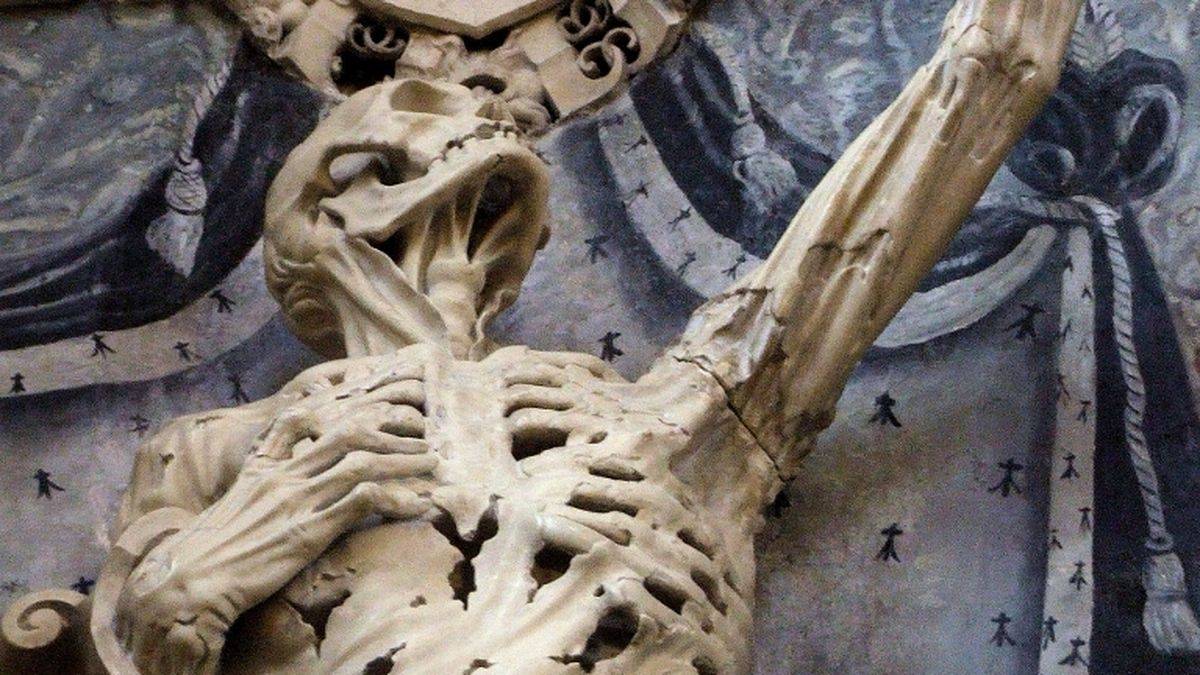 The skeleton | ©MOSSOT / CC-BY
The skeleton | ©MOSSOT / CC-BYLigier Richier and his écorché
The former collegiate church of Saint-Pierre was founded by dukes of Bar in 1315. The church houses a real Renaissance treasure, a sculpture of René de Châlon. A statue also known as ″the Ecorché″, ″the Dead″ or ″the Skeleton″.
A master piece from Ligier Richier, a sculptor born in 1506 in the area. The legend says the famous Michelangelo, in the area for a few days, was amazed by Ligier’s talent. He even wanted to bring him back in Rome!
In short… The transi (″cadaver tomb″) is located in the right transept. Pretty scary, isn’t it?
Anne of Lorraine, René’s wife, ordered the statue. René died during the siege of Saint-Dizier in 1544, leaving a poor widow who was 25 years old...
A dark resquest!
The legend says René, who was dying, asked for a funerary monument with his portrait on it: not a young and dashing portrait, but a skeleton!
A legend… Ligier himself decided to represent René as a rotting body.
Its a triumphant skeleton, his arm raising towards the sky!
René de Chalon
From Holland to Lorraine
René was born in Breda (Holland) in 1519. He was a proud warrior, emperor Charles the Fifth’s favourite one. Then René married Anne of Lorraine, in 1540.
But the war was brewing… René soon waged war against king of France François I.
Wham, a mortal blow in the shoulder
He wrote his will, during this war. Just in case…
And René suddenly died, of a mortal blow of culverin. We were on July 14th 1544.
A surgeon turned up and immediately operated him. But René’s state get worse: on July 15th, he died… he was only 25.
A Transi for ever
A heart and an hourglass
They brought back his corpse in Bar-le-Duc. They took his heart and locked it in a little box. Besides, do you notice our skeleton holds something in his left hand? His heart!
French Revolutionaries stole it, by cutting the arm, in November 1793, when the church was plundered.
So when they restored the statue in 1810, they put a rough hourglass in his hand instead, made of wood! Pretty ugly… The hourglass was quickly replaced by a plaster heart (the current one).
Macabre details
During World War I, city of Bar hid the transi in Paris Panthéon. He came back in a lame condition, completely broken. They restored him and definitively replaced him in the church.
The skeleton was back!
Look at those dry bones, stiffen for eternity! Look at those incredible details… we can see hairs in the inferior part of the skull. The skin hangs on the abdomen, creating a kind of macabre drapery...
